We were met at the Brussels airpost by Grand Circle representatives who took us by bus to our ship, the Bizet, docked at Antwerp.

When we arrived at midmorning, it was close to low tide and the main deck was below street level so we boarded at the sun deck.

Because the Schelde River is a tidal river with as much as 15 feet difference in level, later in the day the ship was floating much higher and we were able to board at the main deck.

A local guide took us on a walk of the Old Town area of Antwerp. Our first stop was at a 1591 building in an alley. This area is now filled with restaurants.
 As we emerged from this alley we were treated to this view of the cathedral.
As we emerged from this alley we were treated to this view of the cathedral.
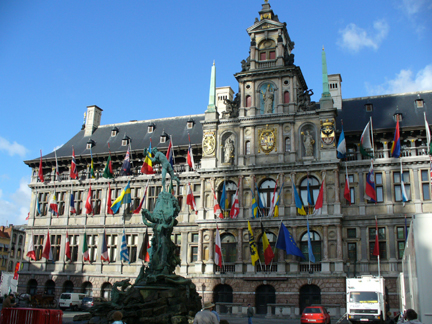 The city hall or rathaus. The Stadhuis (City Hall) dominates the Grote Markt of Antwerp. It was completed in 1565. The baroque fountain in front is the Brabo Fountain, which depicts the legend of how Antwerpen got its name. The legend is that a giant, Druon Antigoon, lived near a narrow bend in the Scheldt River and collected a toll from anyone navigating the river. Druon chopped off the hand of anyone who refused to pay. A Roman centurion named Brabo eventually killed the giant, cut off his hand, and threw it into the river. Hand werpen (hand throwing) evolved into Antwerpen.
The city hall or rathaus. The Stadhuis (City Hall) dominates the Grote Markt of Antwerp. It was completed in 1565. The baroque fountain in front is the Brabo Fountain, which depicts the legend of how Antwerpen got its name. The legend is that a giant, Druon Antigoon, lived near a narrow bend in the Scheldt River and collected a toll from anyone navigating the river. Druon chopped off the hand of anyone who refused to pay. A Roman centurion named Brabo eventually killed the giant, cut off his hand, and threw it into the river. Hand werpen (hand throwing) evolved into Antwerpen.
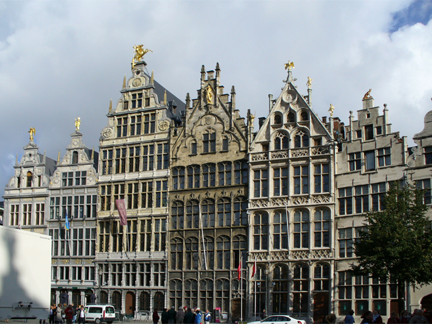
Some of the guild houses in the main square.
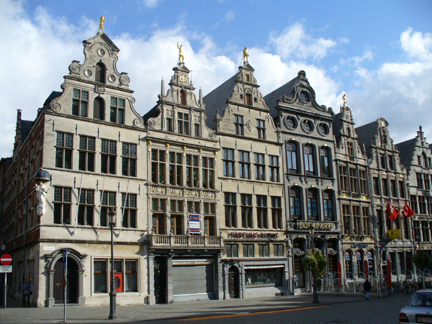
More guild houses.
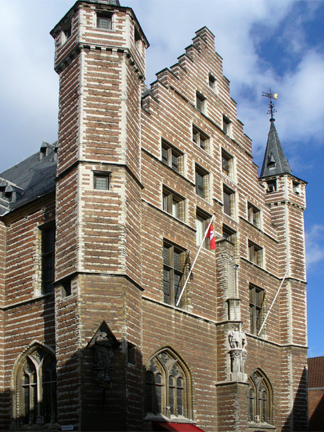 The Vleeshuis or Butcher's Hall is Antwerp's oldest public building. Originally, it was the city's only sanctioned site for meat sales.
The Vleeshuis or Butcher's Hall is Antwerp's oldest public building. Originally, it was the city's only sanctioned site for meat sales.

The Steen, or stone fortress, was built in the early 13th century and was originally part of the fortifications surrounding the Old City.
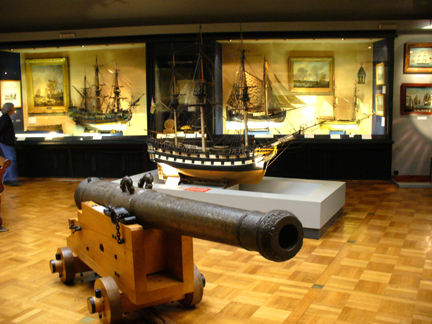 In this castle is a very interesting Maritime Museum.
In this castle is a very interesting Maritime Museum.

In the Groene Markt is a statue of Peter Paul Rubens with the cathedral in the background
 Ruben's House in Flemish style on the left and his studio in Italian style on the right.
Ruben's House in Flemish style on the left and his studio in Italian style on the right.
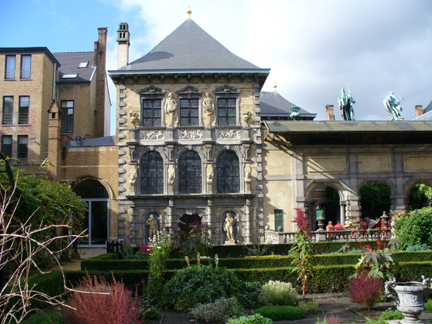
A view from the garden of Ruben's house.
Continue to Cathedral of Our Lady.
